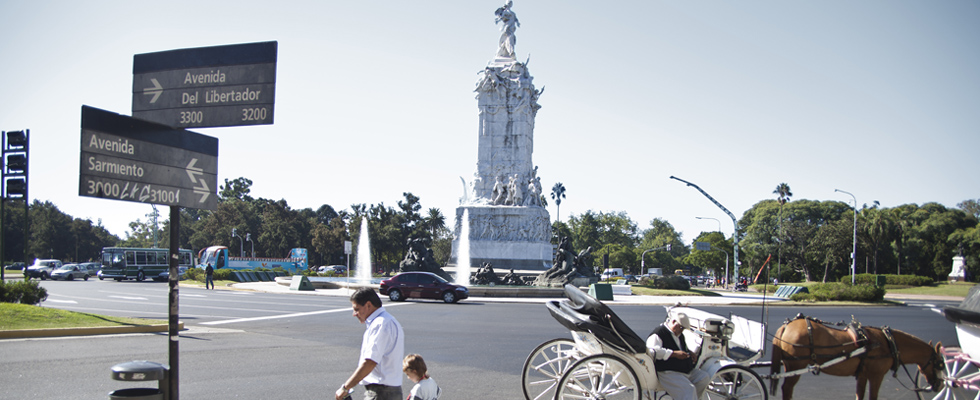6.00pm | An evening with a Spanish flavour
Present in tours
The historic Av. de Mayo, connecting the Casa Rosada and the National Congress in the Monserrat neighbourhood, has a clear Spanish influence, and is often compared with the Gran Vía in Madrid.
Bar Iberia
At Av. de Mayo 1196, this bar is considered to be the second oldest in the city, after the famous Café Tortoni. Between 1936 and 1939, during the Spanish Civil War, it was a meeting point for Spanish republicans, and years later was one of Spanish writer Federico García Lorca's favourite bars.
Teatro Nueva Av.
Close by, at Av. de Mayo 1222, this theatre was created by the city's Spanish community at the start of the 20th century. It often stages operas and zarzuelas produced by Spanish theatre companies. Opened in 1908, the venue suffered a fire in 1979 and only reopened in 1994, with the presence of Plácido Domingo on the opening night.
Café Ávila
Just a block away, at Av. de Mayo 1384, this is the city's oldest flamenco "tablao", offering shows Wednesday - Saturday nights. It also has a Spanish restaurant.
Other recommended tablaos in Buenos Aires, where you can experience the traditional flamenco dancing, singing and music brought to Argentina by Spanish gypsies, include Perro Andaluz, at Bolívar 852, and Teatro Sergio Souza, at Av. Rivadavia 1176.
Restaurante El Globo
There are many restaurants in the area around Av. de Mayo where you can eat traditional Spanish cuisine. El Globo is one of them. Located at Hipólito Yrigoyen 1198, it's famous for its Spanish puchero stew.
Restaurante El Imparcial
Located at Hipólito Yrigoyen 1201, this is the oldest restaurant in the city. It was founded in 1860 by the Spaniard Severino García and its name refers to its attempt to remain neutral during the Spanish Civil War, banning talk of politics over dinner.
Restaurante Palacio Español
A luxurious option at B. de Irigoyen 180.
Restaurante del Centro Vasco Francés
Specialising in Basque cuisine, at Moreno 1370. Other options for Basque food include Iñaki, at Moreno 1341, and Laurak Bat, at Av. Belgrano1144.
Monumento a los Españoles
This monument to the Spanish located at the junction of Av. del Libertador and Av. General Sarmiento in Palermo is the most important emblem of the Spanish community in Buenos Aires. Inaugurated in 1927, it was a gift from the Spanish community to mark 100 years of Argentina's independence.
Curiosities:
Argentina received more Basque immigrants than any other country in the 16th, 17th and 18th centuries, and the influence can be seen in firmly rooted Argentine traditions, from the traditional alpagata shoes and berets worn by gauchos, to the card game "truco".

